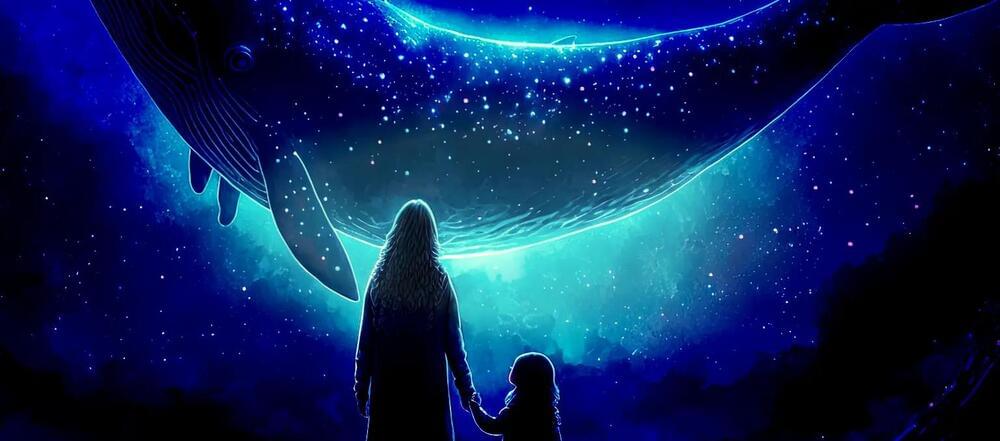Companies say they want ethical AI. But those working in the field say that ambition comes at their expense.


CYBERNETIC THEORY: THE CODE OF REALITY & OUR FUTURE AS CYBERGODS: presenting my published works in a recent talk. Topics include evolutionary cybernetics, computational physics, consciousness, philosophy of mind, cybernetic theory, Omega Point cosmology, physics of time, simulation theory, Global Mind, AGI, VR, Metaverse, Cybernetic Singularity, transhumanism, posthumanism, cybernetic immortality, synthetic telepathy, mind-uploading, neurotechnologies, Fermi Paradox, Dark Matter, Dark Energy, the Argument for Cybertheism, and more.
The main 45-minute slide presentation is followed by a 15-minute Q&A session. This presentation is in Russian with slides and subtitles in English.
Russian-American futurist Alex M. Vikoulov presents his published works in a talk titled CYBERNETIC THEORY: THE CODE OF REALITY & OUR FUTURE AS CYBERGODS at the Rotary Club, The Grand Autograph Hotel, Novosibirsk, Russia, on July 19, 2022. The main 45-minute slide presentation is followed by a 15-minute Q&A session. This presentation is in Russian with slides and subtitles in English (for subtitles turn on caption in settings).
Author publications referenced:
The Syntellect Hypothesis: Five Paradigms of the Mind’s Evolution (2020), available as a Kindle eBook, paperback, hardcover and Audible audiobook: https://www.amazon.com/Syntellect-Hypothesis-Paradigms-Minds…atfound-20

The advent of Large Language Models (LLMs) has unleashed a torrent of possibilities for cutting-edge technology. These powerful computer programs, capable of processing vast amounts of human language data, have paved the way for revolutionary tools like advanced chatbots and voice-controlled devices.
Perhaps the most striking example of this technology in action is ChatGPT, one of today’s hottest internet sensations as of late. ChatGPT is an AI platform that represents the forefront of what we can achieve when we infuse natural language with AI.
But as humans continue to push the boundaries of what’s possible, we are also turning our attention to another frontier: decoding the languages of animals. This article will explore the latest progress in this research, the potential opportunities it could unlock, and the possible risks it could unleash.


They’re warning of a global AI-pocalypse.
While artificial intelligence systems might make lives exponentially easier, they could also have a sinister side effect — making us go extinct. That’s right, researchers are deeming rogue AI an “existential threat to humanity” that needs to be regulated like nuclear weapons if we are to survive.

Last week Magnus Carlsen, the world chess champion, directly accused Hans Niemann, a U.S. grandmaster, of cheating during their game at the Sinquefield Cup, in St. Louis, Mo. He thus made plain an accusation he had been hinting at for weeks.
Carlsen has so far provided no evidence to back up his charge, nor has he specified how the cheating took place. Everyone agrees, however, that if there was cheating, then it must have involved computers, because nothing else could dismay Carlsen, whose rating of 2,856 is higher than that of any other player. And everyone seems to have chosen sides.
Takes a look at how neuroscience is inspiring the development of artificial intelligence. Our amazing brain, one of the most complicated systems we know about, is inspiring the development of intelligence machines. Machines that may well surpass our own intelligence and could birth a new species on the planet. Opportunity and danger lie beyond the singularity!
For those who purchase the video on Vimeo https://vimeo.com/ondemand/towardsingularity there are extended interviews that give further insight into biologically inspired AI technology.
Genre: Documentary.
Duration: 1 hour 6 minutes.
Subtitles: English.
Release: 19th February, 2020
Production: Perfekt Studios.
Director: Matthew Dahlitz.
Director of Photography: Jachin Dahlitz.
Soundtrack: Matthew Dahlitz.
CHAPTERS:
00:00 Introduction.
02:41 Our Amazing Brain.
08:13 Brain Inspired AI
16:23 Current AI
24:00 Smart Robots.
31:37 Integration.
34:33 Concerns.
37:19 Toward AGI
44:06 Dangers.
51:52 The Future.
01:02:32 Close & Credits
This video covers Mars in 2050 and 10 future technologies in the first Mars city. Watch this next video about the world in 2050: https://bit.ly/3J23hbQ.
► Support This Channel: https://www.patreon.com/futurebusinesstech.
► Udacity: Up To 75% Off All Courses (Biggest Discount Ever): https://bit.ly/3j9pIRZ
► Brilliant: Learn Science And Math Interactively (20% Off): https://bit.ly/3HAznLL
► Jasper AI: Write 5x Faster With Artificial Intelligence: https://bit.ly/3MIPSYp.
SOURCES:
• https://scitechdaily.com/mars-settlement-likely-by-2050-says…-elon-musk.
• https://www.news18.com/news/buzz/elon-musk-and-nasa-may-fina…79184.html.
• https://2050.earth/predictions/a-sustainable-civilization-of-humans-on-mars.
• https://www.businessinsider.com/elon-musk-plans-1-million-pe…2020-1
• https://www.inverse.com/innovation/spacex-mars-city-codex.
• https://www.inverse.com/article/54358-elon-musk-explains-how…rs-by-2050
• https://futurism.com/the-byte/elon-musk-million-people-mars-2050
• https://www.lpi.usra.edu/V2050/presentations/Tuesday/6_8236_Ehlmann.pdf.
• https://www.mars-one.com.
• https://en.wikipedia.org/wiki/Colonization_of_Mars.
• https://www.nationalgeographic.org/hires/human-settlement-mars/
• https://www.spacex.com/human-spaceflight/mars/
• https://ntrs.nasa.gov/api/citations/20070008279/downloads/20070008279.pdf.
• https://www.space.com/how-feed-one-million-mars-colonists.html.
• https://www.usatoday.com/in-depth/news/nation/2020/12/30/col…091010001/
• https://eatlikeamartian.org/
Official Discord Server: https://discord.gg/R8cYEWpCzK
💡 On this channel, I explain the following concepts:
• Future and emerging technologies.
• Future and emerging trends related to technology.
• The connection between Science Fiction concepts and reality.
SUBSCRIBE: https://bit.ly/3geLDGO
Disclaimer:

ChatGPT, the AI chatbot developed by tech company OpenAI, can find and fix bugs in computer code as well as standard machine learning approaches – and does even better when engaged in conversation.
Dominik Sobania at Johannes Gutenberg University in Mainz, Germany, and his colleagues sought to see how well ChatGPT compared with other AI-powered coding support tools. A number of tools exist that use artificial intelligence to check programming code to ensure there are no mistakes.
